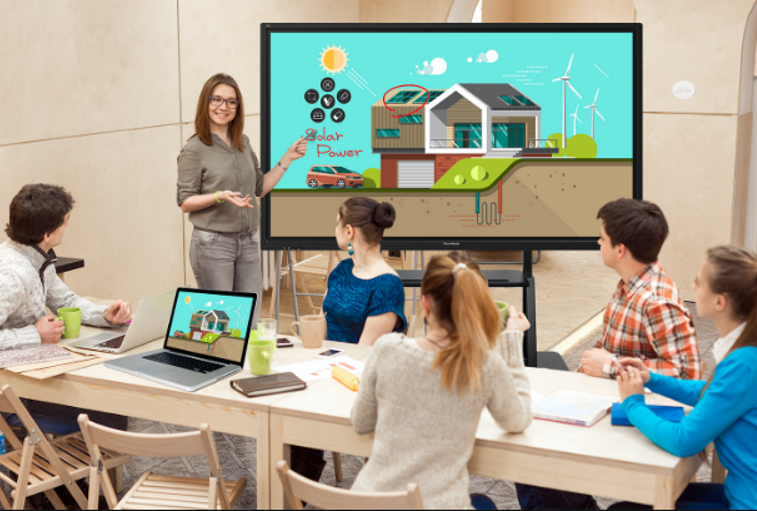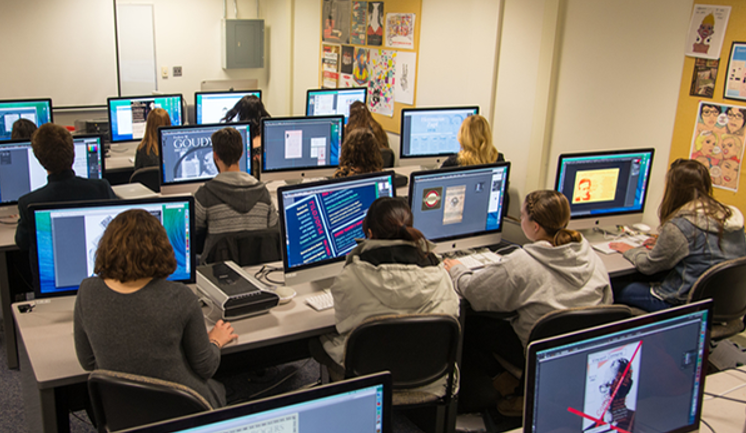Classroom sound technology and audio enhancement systems, which we will simply refer to as classroom audio solutions or educational sound innovations, are essential tools that have revolutionized the learning environment. It has changed the way students and educators interact within the classroom or learning environment.
Classroom acoustic technology involves a range of audio systems designed to optimize the auditory aspects of the academic experience. This post suggests how classroom sounds can facilitate learning. Beyond acoustic amplification, innovative features for enhanced clarity and engagement are incorporated. Components such as microphones, amplifiers, adaptive acoustics, etc., work together to create an immersive sound environment.

In this article we shall be taking an introductory look at classroom sound technology (CST), examining IP-based visual communication solutions, and exploring distributed audio systems for instructional spaces. We shall then conclude by briefly considering sound masking in learning environments.
Introduction to Classroom Sound Technology
Classroom audio solutions offer innovative solutions for maximizing auditory experiences. Let us go a bit further to see how.
Innovative Sound Amplification
The learning environment is improved by amplifying CST to ensure clarity and enhance comprehension. These advanced amplification systems muff sound to the minimum and foster an engaging educational atmosphere.
Integrated Audio Enhancement Solutions
Audio enhancement systems easily blend with instructional tools to provide an engaging and highly interactive study session. Through synchronized audio-visual aids, they have the capability of enriching the learning experiences for students across diverse subjects.
Adaptive Acoustic Control
When adaptive acoustic control is implemented, it ensures optimal sound quality across varying room sizes within the sphere where the CST is installed. An ideal academic environment can be attained by dynamically adjusting the audio settings to mitigate ambient noise.
Customized Audio Configurations
The effectiveness of the acoustic technology is further optimized by tailoring auditory configurations to specific teaching methods and classroom layouts. The settings can also be fine-tuned to distribute audio lectures, discussions, or multimedia presentations as may be required.
IP-Based Visual Communication Solutions

In educational acoustic innovations, IP-based visual communication solutions play a critical role in
transforming the normal learning environments into dynamic and interactive spaces.
Collaborative Learning Environments
Classrooms are transformed into collaborative spaces through IP-based systems. Students engage in various interactive sessions facilitated by visual communication tools that promote participation. They can receive clear and comprehensive information during collaborative activities and a cooperative learning culture is fostered.
Remote Learning Capabilities
IP-based visual communication solutions promote remote learning by providing high-quality audio-visual experiences to students joining classes from various locations. With this technology geographical gaps are bridged; educators conduct classes effectively and educators’ remote capabilities are enhanced significantly. This website: https://edtechmagazine.com/ provides insights on how this can be done.
Multimedia Integration for Enriched Education
Academic content is enhanced while lessons become more engaging and impactful with the incorporation of multimedia elements into IP-based visual communication systems. Multimedia diversifies learning methods and caters to various instructional styles that increase understanding and retention among students.
Flexibility and Scalability
The flexibility and scalability that this system offers allow academic institutions to expand their audio-visual capabilities as needed without compromising acoustic enhancement. IP-based adaptive visual communication solutions ensure that classrooms can evolve alongside advancements in auditory technology.
Distributed Audio Systems for Educational Spaces
It is time to consider how distributed acoustic solutions are helping to reshape the educational space.
Enhancing Acoustic Uniformity
Distributed audio systems (DAS) ensure consistent acoustic quality across various areas within instructional spaces. This system distributes audio evenly across the space ensuring an uninterrupted learning experience and the reception of optimal sound without distortion.
Customized Audio Zoning
With zoning functionality, customized sound can be distributed in different areas of the educational environment. This optimizes the academic environment based on distinct training requirements and caters to specific needs within classrooms, libraries, or auditoriums.
Amplified Learning Environments
DAS contributes to immersive auditory environments and increased engagement and comprehension among students. Enhanced audio quality improves the overall learning ambiance and promotes retention and participation.
Integration with Educational Tools
DAS can be integrated with educational technology to provide synchronized acoustic for multimedia presentations or interactive sessions. DAS enhances the effectiveness of instructional tools and resources to ensure a cohesive audio-visual experience.
Sound Masking in Learning Environments

Sound masking (SM) is a pivotal tool in ensuring a conducive acoustic environment for enhanced training. SM technology complements the classroom sound technology & audio enhancement system by minimizing disruptions. It involves the introduction of ambient background noise – to balance the acoustic environment – to strategically reduce distractions.
Enhancing Privacy and Speech Intelligibility
Sound masking ensures critical discussions are contained within designated spaces to foster a sense of confidentiality and privacy. It does this by raising the ambient noise levels and reducing the audibility of conversations beyond defined areas. With this technology, the confidentiality of conversations is guaranteed while augmenting the effectiveness of the overall enhancement system.
Creating a Focused Educational Atmosphere
By reducing the impact of external noises to the barest minimum, SM contributes to a more focused study environment. As a result, students can concentrate better on educational tasks, engage better in engagement, and get involved in more immersive training or study activities.
Benefits for Varied Educational Spaces
SM technology is beneficial to different educational spaces such as libraries, shared areas, or classrooms. Its adaptive versatility and applicability to various educational spaces ensure a uniform enhancement of auditory environments throughout the institution.
Technology Implementation and Considerations
Customization is required to implement SM solutions to suit specific training environments and meet distinct acoustic requirements. It also ensures seamless classroom auditory enhancement and integration to optimize the system’s functionality and maximize its effectiveness in noise reduction. Click here to read more on this.
Conclusion
Classroom sound technology and audio enhancement systems are revolutionizing education by optimizing sound delivery, improving engagement, and creating an inclusive learning environment. IP-based visual communication solutions provide a collaborative, integrated, and immersive educational experience.
DAS provides customized, uniform, and amplified acoustic delivery. Sound masking technology, on the other hand, minimizes distractions and enhances speech privacy while creating a focused, and private learning environment.
